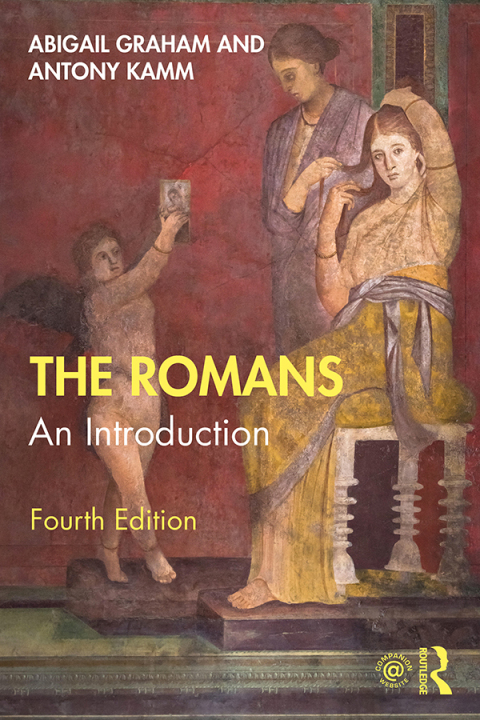Description
Efnisyfirlit
- Cover
- Endorsements
- Half Title
- Title Page
- Copyright Page
- Dedication
- Table of Contents
- List of figures
- List of maps
- Acknowledgments
- Advice on using ancient sources: Caveat Lector (Reader Beware)!
- Companion website
- General introductions and websites
- 1. The Origins of Rome
- Foundation legends and their sources
- Rome: center of the universe
- Further reading
- 2. The republic (510–60 bc)
- The birth of the Roman constitution (509–281 bc)
- Origins of empire: Roman warfare and imperialism (281–121 bc)
- The twilight of the Roman Republic: administering an empire 121–60 bc
- Further reading
- 3. The rise of the Roman Empire Twelve Caesars (60. bc–ad 96)
- Sources on the Twelve Caesars
- The first triumvirate (60–48 bc)
- The rise of Augustus and the second triumvirate
- Augustus: restorer of the republic?
- Tiberius (ad 14–37)
- Caligula (ad 37–41)
- Claudius (ad 41–54)
- Nero (ad 54–69)
- The year of four emperors: summer 68–winter 69 ad
- Vespasian (ad 69–79) and the Flavian dynasty
- Titus (ad 79–81)
- Domitian (ad 81–96)
- Further reading
- 4. The Roman Empire: Zenith and decline (ad 96–330)
- Making the Empire work
- Sources: Cassius Dio, Ammianus and the Historia Augusta
- The “five good emperors” (ad 96–180)
- The Severans: the disintegration of dynasty (ad 180–234)
- The 3rd-century crisis? Devaluation and disorder (ad 235–284)
- Recovery: Diocletian, Constantine and Christian Rome (ad 284–337)
- Further reading
- 5. Roman religions and mythology
- Roman divinities
- Prayer and sacrifice: blessings and curses
- Omens
- Worship in the home
- Worship in the fields
- State religion: offices
- State religion festivals and the calendar
- Religion in the provinces: east meets west
- Jews and Christians
- Further reading
- 6. Society and daily life
- Social hierarchy
- Traditional values and customs
- Economy and money
- The Roman calendar
- Working in ancient Rome
- The roles of women: daughter, mother, wife
- Marriage
- Working girls
- The ideal Roman woman?
- Imperial women: Livia and Agrippina the Younger – tiger moms?
- Slaves and slavery
- Education
- Dress
- Sexuality and gender
- Food and drink
- Holidays and the games
- Further reading
- 7. Art, architecture and building
- Sculpture
- Painting and mosaic
- Domestic architecture
- The architecture of public buildings
- A typical Roman theater
- Infrastructure
- Further reading
- 8. Roman literature
- Languages and sources
- Ennius
- Comedy: Plautus and Terence
- Lyric poetry: Catullus and Horace
- Virgil
- Elegiac poetry: Propertius and Ovid
- Epigram and satire: Martial and Juvenal
- The novel: Petronius and Apuleius
- Historians: Caesar, Livy, Tacitus and Suetonius
- Philosophy and science: Lucretius, Seneca and Pliny the Elder
- Letter writers: Cicero and Pliny the Younger
- Further reading
- 9. The Roman army
- The new model army
- The legion
- Other units
- Weapons and tactics
- Consolidating and patrolling the Empire
- Life in the Roman army
- Further reading
- 10. Rome’s provinces
- Establishing a province
- Capitals of empire in the West: Gallia Narbonensis
- Capitals of empire in the East: Asia (Asia minor)
- Life on the fringes of empire: Roman Britain
- Life on the fringes of empire: Roman Syria
- Conclusions
- Further reading
- Websites
- 11. The fall of the Roman Empire and its legacy: (ad 330-Present)
- The fall of Rome ad 330–476
- The Eastern Empire
- The legacy of Rome
- Imperialism
- Cultural heritage
- Further reading
- Appendices
- 1. The Roman constitution
- 2. Roman names and nomenclature: a brief introduction
- 3. Historical timeline
- 4. Literature timeline
- 5. Glossary of Latin terms in the text
- Index






Reviews
There are no reviews yet.